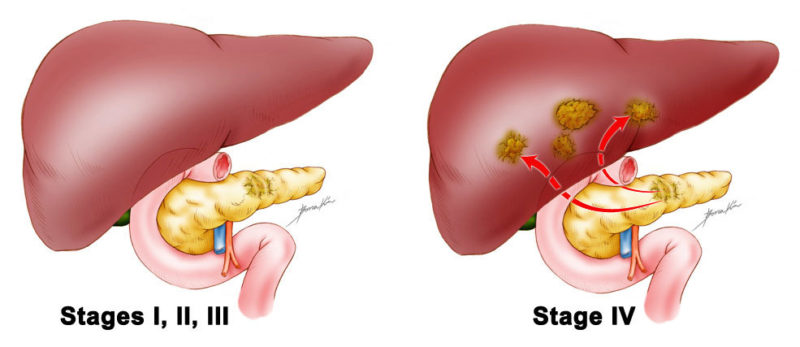Understanding Pancreatic Cancer: Key Signs and Symptoms
Pancreatic cancer, known for its aggressiveness, is the third leading cause of cancer-related deaths in the United States, according to the Hirshberg Foundation for Pancreatic Cancer Research. With a 91% mortality rate within five years of diagnosis, early detection is crucial. Here are detailed insights into 20 symptoms of pancreatic cancer, prompting the need for medical consultation:

- Yellowing of the Skin (Jaundice):
- Jaundice is a primary symptom of pancreatic cancer, where the bile duct blockage leads to bile buildup, manifesting as yellowish skin and eyes. It can also cause itchiness.
- Persistent Lower Back Pain:
- Unexplained lower back pain can signify pancreatic cancer. A tumor may pressure the lower spine and back muscles, causing constant, dull pain.
- Changes in Urine Color:
- Dark brown or rust-colored urine can indicate pancreatic cancer due to increased bilirubin levels in the blood.
- Alterations in Stool Appearance:
- Look out for clay-colored or greasy stools. Blocked bile ducts can alter stool color and texture, indicating potential pancreatic issues.
- Oral Health Concerns:
- Bad breath, inflamed gums, or loose teeth can be early signs. Gum disease and poor oral health are more prevalent in patients with pancreatic cancer.
- Diminished Appetite:
- An uncharacteristic loss of interest in food, leading to avoiding meals, may signal pancreatic cancer due to tumor pressure on surrounding organs.
- Unexplained Weight Loss:
- Significant weight loss without changes in diet or exercise should be medically evaluated, as it can be a symptom of pancreatic cancer.
- Sudden Onset of Diabetes:
- A recent diabetes diagnosis can be a risk factor. The pancreas's role in insulin production means early-stage tumors may affect its function, leading to diabetes.
- Persistent Nausea and Vomiting:
- Ongoing stomach discomfort without a clear cause can be a sign of pancreatic cancer, possibly due to blockage caused by the tumor.
- Development of Pancreatitis:
- Chronic pancreatitis, especially without typical causes like gallstones, can be a warning sign of pancreatic cancer.
- Extended Periods of Bloating:
- Consistent bloating, giving an appearance of pregnancy, can be due to tumor growth causing belly distention.
- Blood Clots:
- Increased susceptibility to blood clots can be associated with pancreatic cancer, though the exact reason remains unclear.
- Gallbladder Enlargement:
- A noticeable enlargement of the gallbladder during a physical exam can be a symptom, typically caused by bile duct obstruction.
- Liver Enlargement:
- Similar to gallbladder enlargement, an enlarged liver might be detected, signifying possible pancreatic cancer.
- Abnormal Fatty Tissue:
- Changes in the texture of fatty tissue beneath the skin can be due to pancreatic enzyme disruptions common in pancreatic cancer patients.
- Severe Fatigue and Weakness:
- General feelings of exhaustion and weakness without apparent cause can be symptoms, exacerbated by nutritional deficiencies due to cancer.
- Itchy Skin:
- Severe skin itchiness, often caused by jaundice, is a potential sign of pancreatic cancer.
- Fever and Chills:
- Flu-like symptoms, including chills and fever, may occur due to bile duct obstructions and digestive disruptions caused by the cancer.
- Diarrhea:
- Frequent diarrhea, often related to nutrient absorption issues, can be an indication of pancreatic cancer, especially with tumors like VIPomas altering water balance in the digestive system.
- Ascites and Oedema:
- Ascites, causing fluid buildup and swelling in the abdominal cavity, and oedema, swelling in legs and feet, can be late-stage symptoms of pancreatic cancer, indicating severe disease progression.
Early detection and treatment of pancreatic cancer are vital due to its aggressive nature. Recognizing these signs and consulting a doctor promptly can significantly improve treatment outcomes.